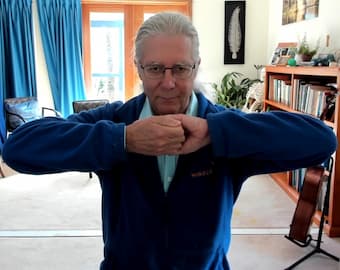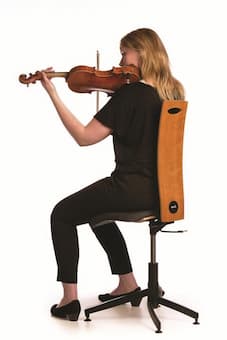
Stanislaw Skrowaczewski
Musicians come to the first rehearsal quite prepared to play every note perfectly since there is little time together before we actually perform. It is our job to react to the interpretation of the conductor. Sometimes it requires the intervention of the concertmaster or the principal players to discern what the conductor is trying to achieve musically. These details might include: adjusting the phrasing or bowing, varying the dynamics, changing the length of notes, balancing sound levels so that a particular musical line is featured, and playing precisely together and unified in approach. A musician’s job includes playing exactly as the conductor indicates no matter how you feel about his or her interpretation.
Conductors vary in their technical style. While some are demonstrative others are spare in their motions. Their approach to the musicians varies too! Maestros can be respectful and agreeable or insulting and raging.
I remember a rehearsal with Sir Neville Marriner who quipped, after hearing a plucked line in the violins, “Those pizzicatos sounded like golf balls landing on dead sheep!”
Stanislaw Skrowaczewski, when he was the Music Director of the Minnesota Orchestra, often shouted in frustration at the strings when he wanted a passage to be played extremely softly, “Play with one hair!!” After years of hearing this, a bass player showed up to rehearsal with a bow actually strung with one hair.
Oftentimes a woodwind player plays a solo as they themselves have conceived it, only to be rudely interrupted by the conductor, “I want to conduct! Play it s-l-o-w-e-r!” The poor woodwind player responds instantly. She gasps for breath as her face turns beet red. String players are frantic when a conductor chooses an unplayably fast tempo and the musicians take the blame when things go awry. After all, the conductor doesn’t make a sound, at least in concert. The audience can see the conductor’s face only when there is seating behind the orchestra in the choir loft. The scowls and mutterings that sometimes occur even in performance are suddenly absent.

Arturo Toscanini
Egos can be colossal. Dmitri Mitropoulos, the legendary Greek conductor attested, “I never use a score when conducting my orchestra. Does a lion tamer enter a cage with a book on how to tame a lion?” Orchestral players appreciate that sort of comparison.

Fritz Reiner
” It was during the first series of recordings with Reiner. We did Ein Heldenleben all day Saturday and Zarathustra the next. When we came to the exposed high octave leap in the middle of the piece, I played it. Reiner looked at me with a little bit of a smirk on his face, and everybody knew what was going to happen…once more he does it. Then he looked at me and said in his thick Hungarian accent, ‘May I do it again? I must fix something in the woodwinds’.
We did it six more times and it was clear he was waiting for me to miss it. Fortunately, it was one of my, shall we say, lucky days and I hit it every time. Reiner looked at me and said, ‘May I do it once more?’ I looked at my watch and said, ‘I’m here ‘till 12:30’. I ended up playing it eight times in a row for him.” Herseth told Reiner that he might as well let the rest of the orchestra go home. He wasn’t going to miss the passage. And with that, at the intermission break of the recording session, Herseth played the infamous “lick” over and over again while he strolled off the stage.
Conductors often inspire us by saying just the right thing to capture the mood of a passage. Herseth recalls that as he prepared for the difficult opening call of Mahler’s Fifth Symphony (The Funeral March) Maestro Jan Kubelík suggested, “that I close my eyes and imagine a hearse, a solemn procession of mourners dressed in black attire and the dull sound of feet touching a cobblestone covered street. I do this even now before playing the trumpet solo.”
For me the most compelling words were from German Maestro Klaus Tennsdedt whom we revered, and whose intensity of music making swept us off our feet. His English was limited and heavily accented but when he exclaimed, “You CAN it” or “you MUST it” we knew exactly how to play.



